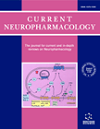
Full text loading...
Neuroprotectin D1 (NPD1) has emerged as an integral lipid mediator with significant implications for maintaining neurological health. Being derived from docosahexaenoic acid (DHA), NPD1 is a specialized pro-resolving lipid mediator (SPM), consisting of a unique structure that attributes potent anti-inflammatory and neuroprotective properties crucial for maintaining nervous system homeostasis. It exerts its actions through diverse mechanisms, including the inhibition of proinflammatory cytokines, modulation of apoptosis, and promotion of cellular survival pathways. The dysregulation or deficiency of NPD1 has been implicated in the onset and progression of several neurodegenerative diseases, such as Alzheimer’s, Parkinson’s, and stroke, underscoring its critical role in maintaining neuronal health and disease prevention. Abnormal NPD1 signalling is associated with neuroinflammation, oxidative stress, and neuronal apoptosis, which in turn contribute significantly to the progression of neurological disorders. Understanding these pathways offers insights into potential therapeutic strategies aimed at targeting NPD1 to mitigate neurodegenerative processes and facilitate neural repair. The efforts in developing NPD1 analogs or mimetics are focused on enhancing endogenous NPD1 levels, attenuating neuroinflammation, and preserving neuronal integrity in disease contexts. This review provides a comprehensive exploration of NPD1, encompassing its structural characteristics, biochemical pathways, physiological roles, pathophysiological implications, and potential therapeutic applications in neurological disorders. Further, research into elucidating the precise mechanisms of NPD1 reveals that its clinical efficacy is crucial for harnessing its full potential as a therapeutic tool for neuroprotection and neural repair.

Article metrics loading...

Full text loading...
References


Data & Media loading...

